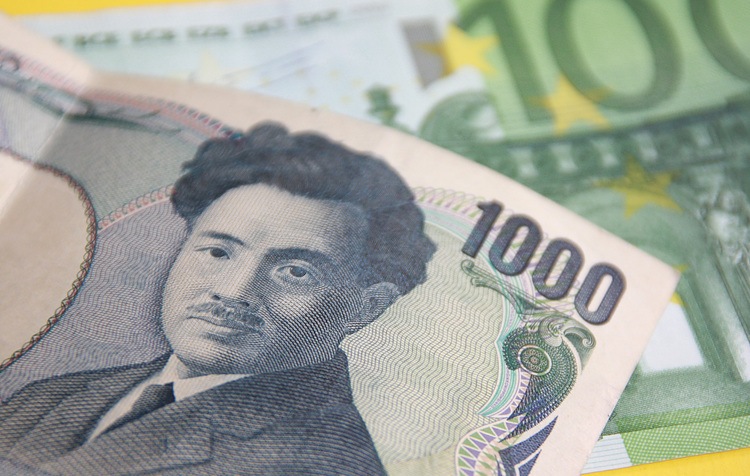- EUR/JPY declines almost half a percent after the release of weaker-than-expected Retail Sales and Factory Orders.
- Verbal intervention by Japanese officials stems JPY’s slow depreciation and adds to EUR/JPY’s downside.
- A decline in German Factory Orders revives fears the country may be entering a recession.
EUR/JPY trades down almost half a percent in the 162.50s on Monday as it closes in on the ceiling of its multi-week trading range from the early August lows. Bears are driving the Euro (EUR) lower following the release of lackluster macroeconomic data for the region.
The pair faces further headwinds as the Japanese Yen (JPY) firms up following verbal intervention by the Japanese FX diplomat Atsushi Mimura who, seeing the currency’s recent weakness – especially against the US Dollar (USD) – cautioned against speculative moves. Continued demand for the Yen as a safe-haven amid an escalation in geopolitical risk stemming from the conflict in the Middle East further underpins the Japanese currency and adds down-side pressure to EUR/JPY.
Traders opt to sell the Euro on Monday after the release of Eurozone Retail Sales showed only a 0.80% annual rise in August which was weaker than the 1.0% expected, but higher than the 0.1% decline in July. German Factory Orders, meanwhile, declined by 5.8% on a seasonally adjusted basis in August, which was well below the 2.0% decline expected and the upwardly-revised 3.9% rise of the previous month. The data adds further veracity to the view that the country is sliding into a recession.
EUR/JPY is likely to see its untidy progress higher capped by rising expectations that the European Central Bank (ECB) will cut interest rates at its meeting next week. Lower interest rates are usually negative for a currency as they reduce foreign capital inflows.
ECB Governing Council member François Villeroy de Galhau said overnight that the ECB will “quite probably” cut interest rates at the meeting, adding the ECB has to pay attention to the risk of undershooting its 2.0% inflation target “due to a weak growth and a restrictive monetary policy for too long.” His comments “support market pricing for a total 150 bp of easing over the next 12 months” according to analysts at Brown Brothers Harriman (BBH).
Most recently the Eurozone Harmonized Index of Consumer Prices (HICP) showed prices rose by 1.8% in September from 2.2% previously and below the 1.9% forecast, according to Eurostat. Core HICP fell to 2.7% from 2.8% previously and the same expected. The undershooting inflation data backs up comments from the ECB President Christine Lagarde who hinted that inflation was falling back to the central bank’s 2.0% target, as expected. “The latest developments strengthen our confidence that inflation will return to target in a timely manner,” she said last week.
EUR/JPY had been on the rise last week after Japan’s new Prime Minister Shigeru Ishiba and his Economy Minister Ryosei Akazawa caution before raising interest rates given the “current economic conditions”. This wrong-footed markets which had expected him to take a neutral approach.
Read the full article here

